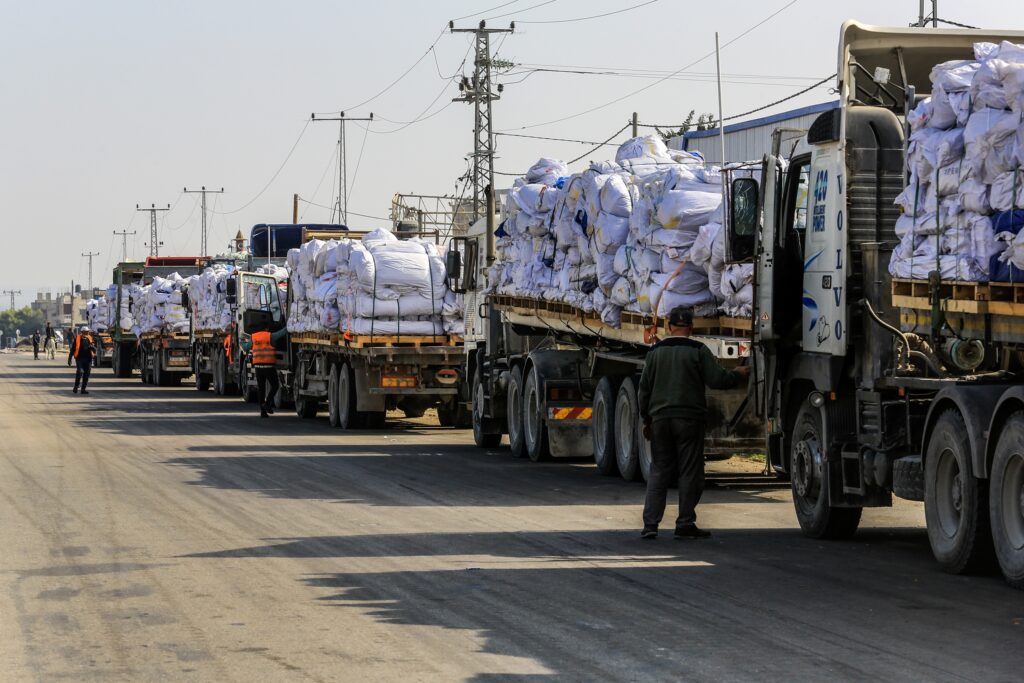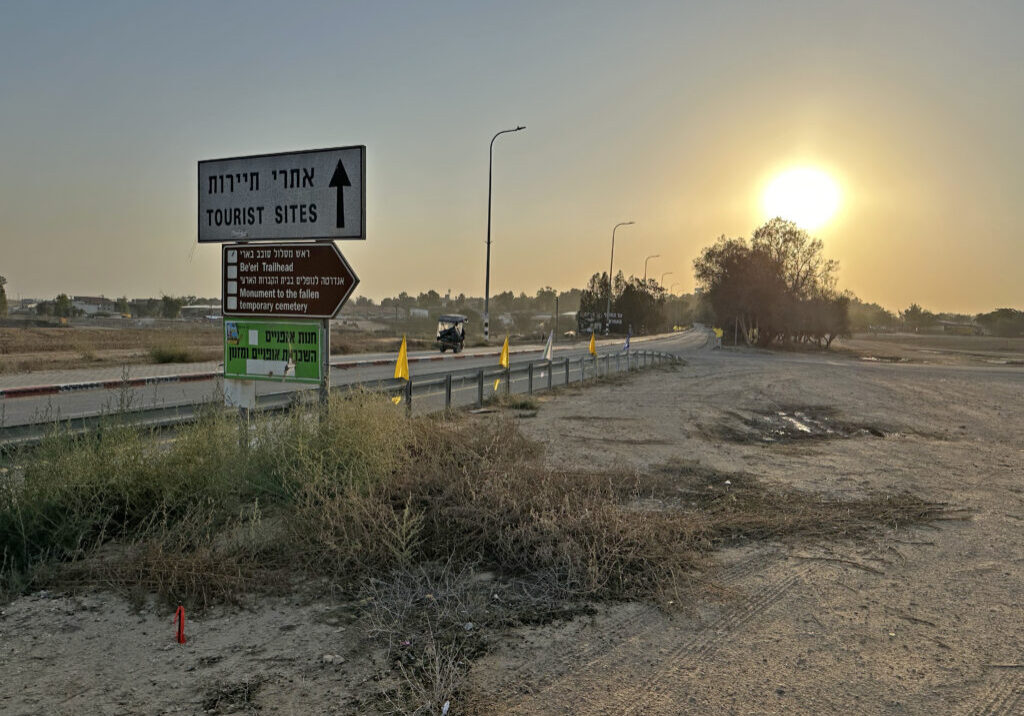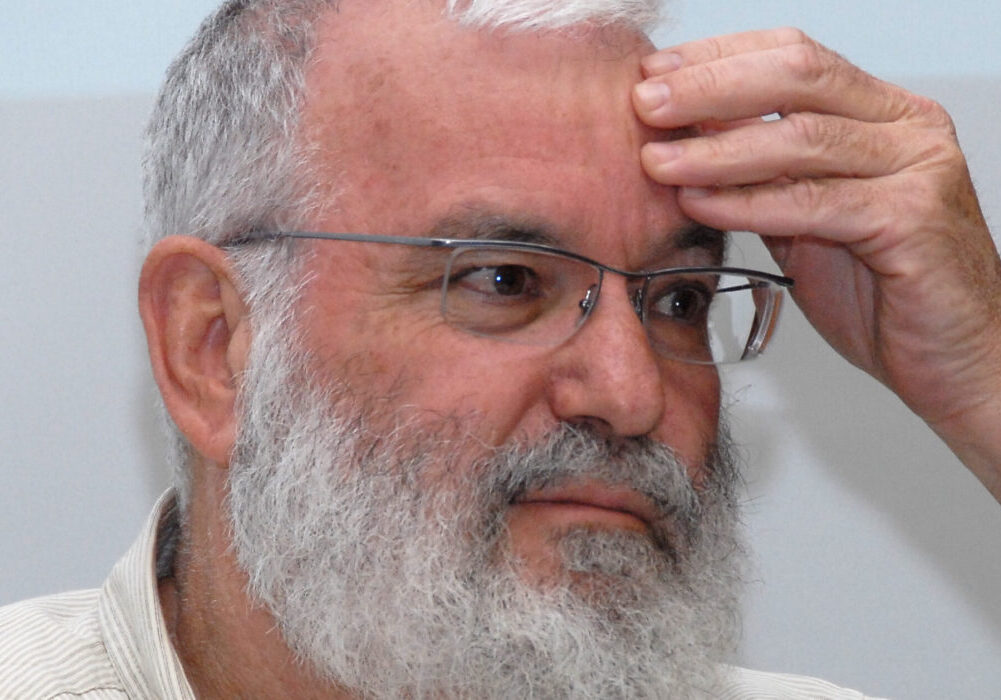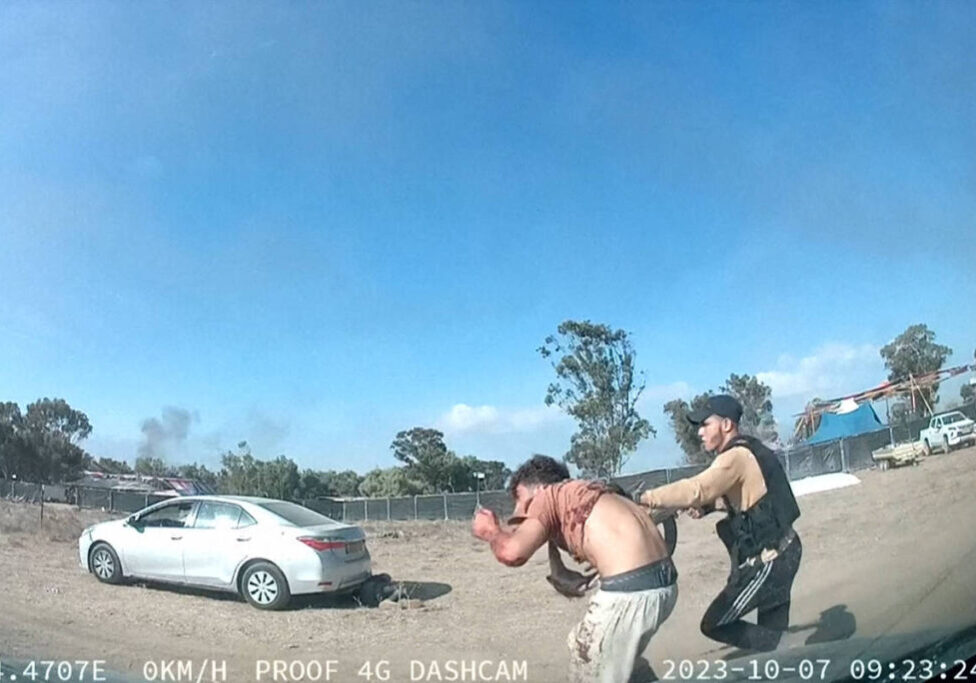Australia/Israel Review
Scribblings: The UN’s “500 trucks” – a lie that won’t die
Sep 18, 2025 | Tzvi Fleischer

Throughout the war in Gaza, you would often have seen it reported that UN experts or aid agencies say that Gaza needs 500 or even 600 trucks of aid a day to meet the needs of the population. For instance, an unattributed Canberra Times story on September 1 said, “The United Nations and partners have said the pauses, airdrops and other recent measures fell far short of the 600 trucks of aid needed daily in Gaza.” Wire service stories repeat this claim regularly. For instance, Reuters made it on July 29, 2025, Aug. 4 and Aug. 5.
These numbers seem to mainly have originated in reports from the United Nations Office for the Coordination of Humanitarian Affairs (OCHA). In February this year, an OCHA briefing said 500 trucks a day were needed to meet “people’s basic needs”. Other OCHA documents talk about a target of 600 trucks per day.
But any claim that Gazans need 500 to 600 truckloads of aid per day to meet their basic needs is obviously absurd if you look at the history of trucks entering Gaza before October 7, 2023.
The UN claims that prior to the outbreak of the war, 500 trucks a day crossed into Gaza, 150 of which were loaded with food. This is just wrong.
A recent study by four scholars from the BESA Centre at Bar-Ilan University has demonstrated this by going through OCHA’s own data on goods trucks entering Gaza. These show that, in 2022, only an average of 292 trucks entered Gaza per calendar day. Moreover, half of those were loaded with construction materials (which Gazans currently have little use for.) Of those 292, an average of just 73 carried food.
The widely reproduced “500 trucks” error seems to have occurred mainly because UN agencies used the average number of trucks that were entering per working day, not calendar day, in its calculation of how many trucks Gaza needs daily.
While it is true that Gaza grew some produce and meat before the war, this probably accounted for no more than 12% of calories consumed, according to the BESA study.
BESA concludes that you would need no more than 86 food trucks daily to provide a food supply equal to the prewar situation – nothing like 500. And this was exceeded in almost every month of the war (barring the March through May pause earlier this year).
And you don’t have to accept the BESA academics’ estimate to know that enough was getting in. Looking at people’s needs, and not phony claims about pre-war trucks, the World Food Program (WFP) has estimated that Gaza’s population of 2.1 million needs a minimum of 62,000 metric tons of food aid per month. And from March through December 2024, 788,216 tons of food aid entered Gaza – an average of 78,821 tons per month, more than 25% above the WFP’s stated threshold.
Furthermore, during the ceasefire in January and February of this year, 380,223 tons entered in six weeks – enough to provide five months’ worth of food according to the WFP’s numbers.
Taking advantage of this glut, Israel subsequently paused aid from early March to mid-May because Hamas was stealing vast amounts and using it to retain power, but since then aid has again peaked. No less than 123,000 tons of food was delivered to Gaza in August – double what the WFP says Gaza needs, causing food prices to plummet there.
But that excess required the entry of an average of around 199 food trucks per day (out of an average of 216 aid trucks of all kinds daily) throughout August – nothing like the 500 to 600 trucks per day we keep hearing about from supposed aid experts.
Pay-for-slay lives on
You may have heard that the Palestinian Authority (PA) announced in February that its controversial “pay-for-slay” policy – which provides large pensions for Palestinians imprisoned for terrorist attacks, or to their families if they were killed in the attacks – was being terminated. You may have also heard the French Government claim that, in exchange for Palestine recognition, the PA wound up “pay-for-slay” on Aug. 1.
But neither claim appears to be true. Despite recent PA claims the system has replaced with one based on welfare needs, a variety of Palestinian sources put out announcements that these payments were once again available to recipients through the Palestine Postal Bank in early August.
Radio Al-Zaytouna’s Telegram channel announced on Aug. 3:
“Transfer of salaries for prisoners and families of Martyrs and the wounded via the ATMs of the Palestinian Postal Bank – today, Sunday 3/8/2025.”
Two other Palestinian Telegram channels made very similar announcements on Aug. 5 (Source: Palestinian Media Watch).
This is yet another example out of myriads where a promise of Palestinian Authority “reform” was meaningless. Yet governments like France’s and Australia’s think they have achieved something when they succeed in getting 89-year-old PA President Mahmoud Abbas to give them verbal assurances that he will soon introduce reforms.
The “Moderates”
Meanwhile, how did the “moderate” Palestinian Authority react to the terrorist attack in Jerusalem on Sept. 8, in which two Palestinian gunmen opened fire on a crowded bus, killing six civilians and injuring at least 21 others?
Officially, Mahmoud Abbas released a statement saying the PA “emphasised its opposition and condemnation of attacking civilians, whether Palestinian or Israeli.”
However, Fatah, the political party that Abbas heads and that controls the PA, had a very different take. On its official feed on X, it said, “The Fatah Movement offers congratulations for the heroic operation [carried out] this morning.” The same feed later posted pictures of the bodies of murdered Israelis with the caption, “A very good morning.” [Source: MEMRI]
Meanwhile, official PA-TV, on Aug. 22, broadcast a sermon from PA religious judge Abdallah Harb calling on Allah to “destroy our enemies…O Allah. Allah, count them one by one, kill them one by one, and do not leave even one.” In a similar PA-TV sermon in June, Harb had been very explicit who these “enemies” he wanted completely wiped out are, saying, “Strike the thieving Jews, Allah count them one by one, kill them one by one, and do not leave even one.” [Source: PMW]
Just a reminder that, while Hamas is a huge obstacle to peace, it is folly imagining the PA as currently constituted can be the solution.






